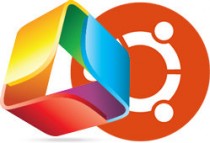It’s been quite a long time since I’ve had this much trouble with Linux detecting a hard drive. It brought me back to Ye Olde Linux days when 14 floppy disks housed your distribution and more times than not you didn’t have compatible hardware and had to find out via BBS what modem worked with what kernel…sometimes, it was a major pain…and that was the fun in it 🙂
In today’s installation of Linux…I thought I’d left those days behind. I was wrong, unfortunately.
I downloaded Ubuntu 12.04 to install so that I could put Amahi on my video/picture/file/tv/movie share Linux machine. Amahi is pretty much the best program on the face of the planet to use for this purpose…I’d put it up against any ‘samba-like’ distribution of Linux out there and I think it would come out on top. Anyway, I went to install Ubuntu 12.04 and I immediately hit a problem: it wasn’t detecting my hard drive. I got out my notes for when I last installed an operating system on this server and it happened to be the last release of Amahi on Fedora…which was Fedora 14. In that instance, I had to pass the nodmraid option in order for my hard drive to detect.
Easy enough. I went into the Ubuntu options for booting. Chose F6 and then selected nodmraid. It booted fine and I went to a desktop. Once there, I clicked the install icon. Things were looking good until I went to the part of the installer where you choose a hard disk…which didn’t give me any hard disks. I tried this process again and again…often times putting in other options such as noapic, nolapic and other awesome boot parameters using the F6 portion of the boot prompt. No joy on any of these tries. What could it be?
After a few minutes of brainstorming, I realized that Ubuntu wasn’t actually honoring the boot parameter for nodmraid. Since this was the case, the hard drive wasn’t detecting. In order to get the hard drive detecting, I should remove the dmraid information from my hard drive and see if this made a difference. So, here’s how I fixed this problem:
- Instead of booting to install Ubuntu, select the option to Try it first
- Once there, hit up the dashboard, click on all applications, and search through all 78 until you find Terminal
- Once the terminal is up, type sudo su and hit enter. You’re now root.
- type fdisk -l and take note of the letter designation of your hard drive that is having problems detecting (sda in my case).
- type dmraid -E -r /dev/sdX where ‘X’ is the letter designation of your hard drive.
- Answer yes to the question it asks of if you wish to remove the dmraid information on the drive.
- Reboot and Install Ubuntu. It should now detect.
Not a hard thing to figure out…but it might be for some new users…and I’m almost certain Amahi users will run across this…because many of them are converts from Windows Home Server. In this case, they’d probably be pretty freaked out having to drop down to a command line and issue commands. Hopefully, this article will be a handy tool for them to use in order to get Ubuntu and subsequently, Amahi installed on their computer. Thanks for reading!
